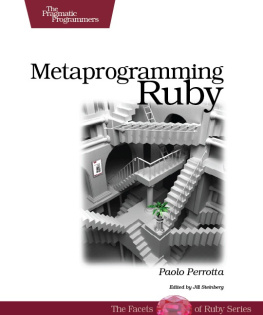America's Greatest Projects
From the Panama Canal to the Alaskan Pipeline
Dom Perrotta
Copyright 2020 by Dom Perrotta
All rights reserved. No part of this publication may be reproduced, distributed, or transmitted in any form or by any means, including photocopying, recording, or other electronic or mechanical methods without the prior written permission of the publisher. For permission requests, solicit the publisher via the address below.
Christian Faith Publishing, Inc.
832 Park Avenue
Meadville, PA 16335
www.christianfaithpublishing.com
Printed in the United States of America
Table of Contents
Acknowledgements
Lt. Charles Alger, USAAC
Mrs. Jean Von Rosenberg
Mr. Kirk Von Rosenberg
Wikimedia Foundation
Allis-Chalmers Corporation
Introduction
During the past 120 years, Americans have achieved phenomenal success to become the greatest nation in the history of the world. Notwithstanding the many inventions that we have created, such as the electric light bulb and the telephone and the airplane and the internet, Americans have been responsible for some of the greatest and most beneficial projects in the modern era.
This publication exams how each of these great projects was developed and managed, and how these projects have positively impacted the entire world as well as the United States of America. Clearly these projects had a profound effect and benefitted Americans in particular. Some of these projects were considered and planned for several years, or even decades, before they were initiated and developed. All involved U. S. government officials and agencies and many engineering firms and sub-contractors. Some, such as the atomic bomb (Manhattan Project), caused enormous devastation to another country (Japan), while ending the proliferation of mass casualties and destruction from the greatest war that the world, hopefully, will ever see.
There is little doubt that any of these projects could have been successfully accomplished without the wisdom and commitment of numerous quality American engineers and technical personnel. In this publication we attempt to recognize the strong efforts and dedication of some of those individual engineers as well as many others which resulted in these projects coming to a successful conclusion. While this is not intended to be an ecclesiastical publication, the reader will recognize that the inspiration and many of the revelations for these projects undoubtedly came from a higher power.
The beginning of this publication focuses on the development of the Panama Canal and its many largely unknown events, some dating back to the sixteenth century. Ensuing projects include the construction of the Hoover Dam, the Manhattan Project (the race to make an atomic bomb), and a comprehensive description of the Trans-Alaskan Pipeline as seen for the first time using seven years of daily logs recorded by the actual Project Manager. Each project emphasizes the wisdom and tenacity of the engineers and other personnel, as well as the role of the U. S. Government, to initiate and plan these life-changing projects. The significant efforts of the many individuals who provided such enormous success should motivate each reader to do greater things.
Project No. 1: The Panama Canal
We trace the history leading up to the actual opening of the Panama Canal in 1914, including the ideas and the attempts by other nations to develop a canal that would join the Atlantic and Pacific Oceans. We also describe the efforts of many individuals, including doctors and humanitarians as well as engineers, to achieve such a world-changing feat. Without the efforts of key members of the medical profession, the death toll during the years of the Panama Canal construction would have been overwhelming. Furthermore, the role of the federal government in seeing this project through proved to be highly significant.
Project Outline
A. Early events
- Panama Railroad Company
- Suez Canal
- Enter the French in Panama
B. The United States takes the lead
- The French look for a bailout, turn to the US
- US political intrigue
- Events leading to the Panama Canal construction
- Medical Breakthrough
C. US construction begins
- Early planning
- Major General George Goethals
- Design and construction of locks and dams
- Project statistics
D. Summary
A. Early Events
Nearly every major project in the United States has been influenced by both the needs of its citizens as well as by the political atmosphere of the country. The history, planning, and construction of the Panama Canal was certainly no exception. Considered by most professional engineers and by nearly all civil engineers to be one of the wonders of the modern world, the Panama Canal was many decades in the planning and political stages.
As early as the sixteenth century, an access through the Isthmus of Panama was recognized by European leaders and magnates to afford their nations an advantage in shipping and world power. A direct route between the Atlantic Ocean via the Caribbean Sea and the Pacific Ocean would not only cut weeks from their travels around South Americas Cape Horn, and through the treacherous Straits of Magellan, but would also strengthen their nations economic and military power. Even after the American Revolution in 1776, world powers such as Great Britain and Spain continued to explore alternate routes to travel from the Atlantic to the Pacific.
1. Panama Railroad Company
Nevertheless, the very first official connection between the two great bodies of water turned out to be a railroad. In 1846, a group of investors in New York City managed to raise $1 million in order to build a railroad that would transfer people and goods from the East Coast to the West Coast of the United States and then on to Asia. A survey was commissioned and engineering companies were hired in 1848 by William Aspinwall who had conceived the idea of constructing the railway and who had the federal contracts to deliver mail between the East and West Coasts of the United States. Prior to the railway being built, the many travelers who were intent on reaching the West Coast from the Eastern US through Panama had used small boats, on the very dangerous Chagres River, and mules for the last several miles of the journey which normally took about seven to eight days.
An optimum route of just over forty-seven miles was chosen, and construction of the railroad began in January of 1850; but many problems were encountered during the first phase of the construction. The survey had many inaccuracies and gross miscalculations, including not being done during the nine-month rainy season when the Chagres River would rise as much as forty feet. Agreements had to be signed between the firm, known as the Panama Railroad Company (PRC), and the Colombian government which owned the entire Panama region at that time. A port had to be constructed at each end of the railroad to accommodate the steamships that would bring mail, cargo, and people to and from the Isthmus of Panama. Millions of cubic yards of fill had to be brought in to allow the railroad to span vast regions of swamp land (fortunately, PRC was given access by the Colombian government to a nearby rock quarry).
The bad news was that after two years of construction, less than eight miles of track had been laid and the original investment of $1 million had been depleted. The good news was that gold had been discovered in California a few years earlier and more and more people were appearing every day to seek their fortunes. They were willing to pay large fees to the PRC to take them at least partway across Panama by rail. As the result of these unexpected revenues, the entire railroad was able to be completed by 1855, from end to end, at an additional cost of $7 million. The engineers and construction crews had managed to overcome the many problems that would continue to plague them in the future: not just a rainy season that lasted from April to December or floodwaters that caused the nearby Chagres River to rise but also the alligators that proliferated in the swamplands and the diseases of cholera, malaria, and yellow fever that were carried by the millions of mosquitoes and were responsible for the deaths of an estimated five thousand to ten thousand construction workers.












